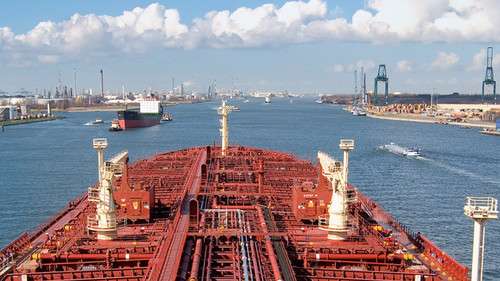Belgium is main EU distribution hub for chemicals from Middle East
Belgium is the most important European distribution hub for chemicals from the Middle East, according to a report published at the end of 2013 by the Gulf PetroChemical Association.
In fact Belgium’s share of GPCA exports to Europe has more than doubled since 2002.
The report brings together information from Bahrain, Kuwait, Oman, Qatar, Saudi Arabia and the United Arab Emirates, together with data provided by the Gulf Cooperation Council (GCC). The impact of the chemical industry in the Gulf region is analysed quantitatively in the report according to various parameters including contribution to GDP, available production capacity and applications per product segment, import and exports, added value and job creation.
Over the past decade the Gulf states have developed into important production centres for petrochemicals in their own right. Total exports of chemical products from these countries rose from 7 billion dollars in 2002 to 52.7 billion in 2012. Asia is by far there largest market.
Europe comes in second place with 8.4 billion dollars or 15.9% of total exports by Gulf states in 2012. In terms of volume this represents 7.8 million tonnes, an increase of 280% in comparison with 2002. Turkey (outside the EU) and Belgium (inside the EU) between them account for half of these exports to Europe, with 26% and 24% respectively.
The fact that the port of Antwerp is also home to the largest integrated petrochemical cluster in Europe undoubtedly also plays an important role here. The Antwerp service providers offer a very high level of know-how and concern for safety in the chemical logistics chain, while Antwerp’s central location is another important advantage. This favourable position was further confirmed last year by the excellent figures for the volume of liquid bulk handled by the port (see separate article on provisional freight volumes for 2013).
The full report can be viewed here.
Categories
Countries
Companies
Latest news
Ports of Duisburg and Rotterdam advance energy transition together
Port of Rotterdam →With this LoI, the two major European logistics hubs reinforce their goal of jointly developing sustainable transport corridors via waterways as well as future-oriented initiatives for the energy t...
BASF constructs new electronic grade ammonium hydroxide plant in Ludwigshafen
BASF SE, Ludwigshafen →State-of-the-art facility to support the development of the advanced European semiconductor industry. New capacity meets growing demand for the manufacturing of chips in Europe
SynPet Technologies to bring emerging technology in plastics recycling to the Port of Antwerp-Bruges
Port Of Antwerp →SynPet Technologies is investing €300 million in an innovative facility that converts all types of plastics into a circular naphtha substitute without pre-treatment and with efficient conversion ra...
NEXTCHEM awarded a feasibility study by Mana Group and Equinor for the production of sustainable fuels in Norway leveraging its NX Circular™ technology
With the support of NEXTCHEM, Mana (NG Nordic) and Equinor are entering an early-stage strategic partnership to explore the potential development of the Nordics' first large-scale waste-to-methanol...


